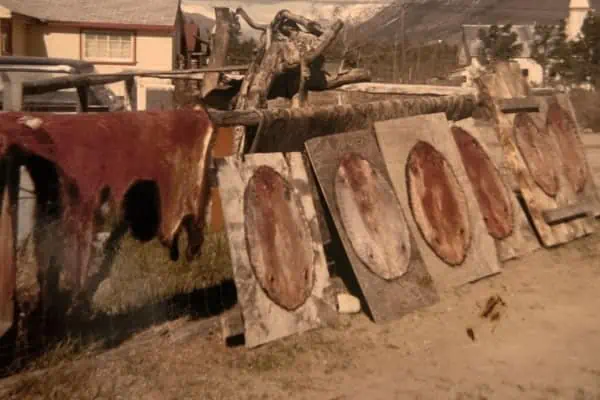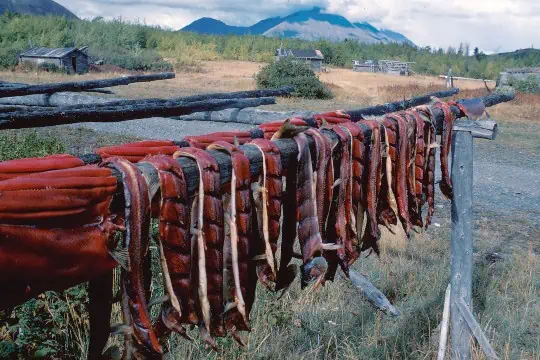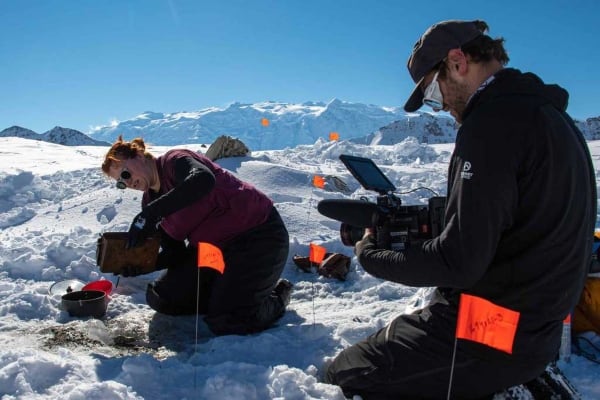In the fall of 2018, a two-metre-long, 6,000-year-old Yukon atlatl-throwing dart was discovered in melting ice in the Traditional Territories of the Carcross/Tagish First Nation and the Kwanlin Dün First Nation.
According to Valery Monahan, Yukon Museums Conservator and study co-author, the throwing dart is the latest discovery in a series of similar discoveries, from one of Canada’s most important archaeological projects.
“It’s a multi-disciplinary project that’s been going on since 1997,” said Monahan. “It involves the discovery of ancient and more recent hunting tools that have been preserved because these alpine areas have ancient snow and ice that has acted almost like a time machine.”
Monahan said that with recent warming climates, ancient patches of snow and ice have been melting at a high rate during many summers of the last few decades, exposing objects that have been frozen in them for thousands of years.
One thing that makes this particular finding special is the presence of beaver castoreum on the dart, something that was not previously known to be used in ancient Yukon hunting technology. Beaver castoreum is a secretion from the castor sacs of beavers that the animals use to mark their territories.
“This latest discovery is of a material that we just did not expect to find on a two-metre-long bunting dart,” said Monahan.
Previous discoveries of ancient hunting tools contained paints and adhesives that were commonly made with spruce resin and ochre. Originally, Monahan and her colleagues thought the beaver castoreum was one of these two things.
“All of the orange-red paint stuff has been ochre, and all of the adhesives have been either spruce resin or spruce resin mixed with ochre,” she said. “That’s going back 7,000 years; we have all these examples.”
The beaver castoreum was seen on two different parts of the dart and the team sent it for testing to clarify it was one of the materials they expected, only to find out it was something completely different.
“When the analysis was done, it turned out to be castoreum, which is a material we have never discovered in this collection,” Monahan said. “Although it is known to have been used here for a variety of reasons, it was not associated historically, that we had heard of, with large hunting tools that were used to hunt caribou or sheep or bison up in the alpine.”
Monahan has been working in her field for more than 20 years and considers this one of the most exciting discoveries she has gotten to work with in her career. As she explained, it is not common to find such large artifacts completely intact. Most discoveries consist of much smaller pieces of ancient artifacts.
“You’re really taught early on in archeology that you will never see complete objects of any age,” she said. “Most of what you find is tiny bits, but to see a complete two-metre dart, it’s an amazing opportunity to see this ancient object that almost looks new. It looks like you could use it today.”
According to Monahan, this dart is likely the first of its kind to be discovered fully intact in the world, and the fact that it had been preserved for 6,000 years makes that even more exciting\
“To get to examine it closely and find this tiny little bit of something that tells you this completely different story, it’s hard to explain how exciting and dorky it is,” she said.
To read more about this discovery, visit https://yukon.ca/en/news/beaver-castoreum-found-ancient-throwing-dart-sheds-new-light-traditional-hunting-technology




